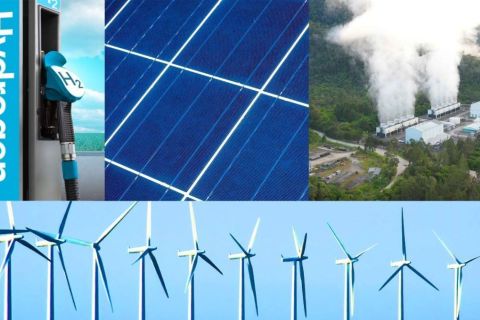
Hark back four decades and the energy picture was grim. You could spot a service station several blocks before you got to it by the line of cars waiting to buy gasoline.
Even with that, you could only buy gas on odd-numbered or even-numbered calendar days, according to the last digit of your license tag. Woe be to the pushy driver who tried to buy gas on, say, April 24 whose tag number on the back of his Olds Cutlass or Plymouth Grand Fury ended in 3.
Congress, in its wisdom, passed a law banning the export of American-produced crude oil to save what little of the precious commodity we had. After all, the conventional wisdom knew the world was running out of oil.
Then there was natural gas. Public Service Co. of Oklahoma was building its Riverside power plant in Jenks, Okla., at the time, which was note-worthy because it would be fi red with gas. There were protests: The U.S. was running out of gas, why waste this precious, scarce hydrocarbon to make electricity when abundant coal would do just as well?
Utilities around the country were taking down gas-fired power plants to refit them to burn coal. And those refitted plants and any new ones were badly needed. There were brownouts on hot summer days as the power grid strained from the load and cities were turning off streetlights at night to save juice.
The conventional wisdom was Riverside would be the last natural gas-fired power plant built in the U.S.—ever.
I called a Public Service executive a few days ago to verify Riverside is still there. He responded with laughter when I quoted that sentence above to him. Yes, he confirmed, not only is Riverside still there but has been expanded three times since its first train went online in 1974. All four trains use gas and have the capability to produce a combined 1,059 megawatts. Not only is Riverside gas fi red, it is the biggest generating station operated by the firm, now a unit of American Electric Power. Public Service also operates five other gas-fired power plants.
Senior Editor Frank Nieto’s cover story in this issue looks closely at how things have changed in the last 42 years since the first current fl owed out from Riverside’s generators. In a great switcheroo, coal-fired plants are going down now to be refitted for gas. That means an expanding market for the nation’s more-than-abundant gas production, created thanks to the shale revolution. That will add many additional miles of new pipeline projects to North America’s ongoing midstream buildout.
Things change and that brings into question, what conventional wisdom do we hold today? Everyone just knows gas is only a bridge fuel that will enable us to make do until renewable energy—wind, solar, biomass, ethanol, etc.—become practical.
Maybe.
It proves once again that midstream management must remain flexible and adapt. There’s also the conventional wisdom that low commodity prices will be with us for the foreseeable future.
Midstream Excellence Awards
Separately, please note the deadline for our 2015 Midstream Excellence Awards has been extended to June 1. We realized many of you were focused on end-of-the-year financial reports and plans and did not have time previously to submit a nominee for the three categories: executive of the year, deal of the year and project of the year. Winners will be announced at Hart Energy’s Midstream Texas conference, scheduled for Sept. 12-14 in San Antonio.
I hope you have a moment to think about your nominations and submit them at www.midstreambusiness.com/excellence-awards.
Recommended Reading
Initiative Equity Partners Acquires Equity in Renewable Firm ArtIn Energy
2024-04-26 - Initiative Equity Partners is taking steps to accelerate deployment of renewable energy globally, including in North America.
Energy Transition in Motion (Week of April 26, 2024)
2024-04-26 - Here is a look at some of this week’s renewable energy news, including the close of a $1.4 billion decarbonization-focused investment fund.
No Silver Bullet: Chevron, Shell on Lower-carbon Risks, Collaboration
2024-04-26 - Helping to scale lower-carbon technologies, while meeting today’s energy needs and bringing profits, comes with risks. Policy and collaboration can help, Chevron and Shell executives say.
Solar Sector Awaits Feds’ Next Move on Tariffs
2024-04-25 - A group of solar manufacturers want the U.S. to impose tariffs to ensure panels and modules imported from four Southeast Asian countries are priced at fair market value.
Solar Panel Tariff, AD/CVD Speculation No Concern for NextEra
2024-04-24 - NextEra Energy CEO John Ketchum addressed speculation regarding solar panel tariffs and antidumping and countervailing duties on its latest earnings call.





